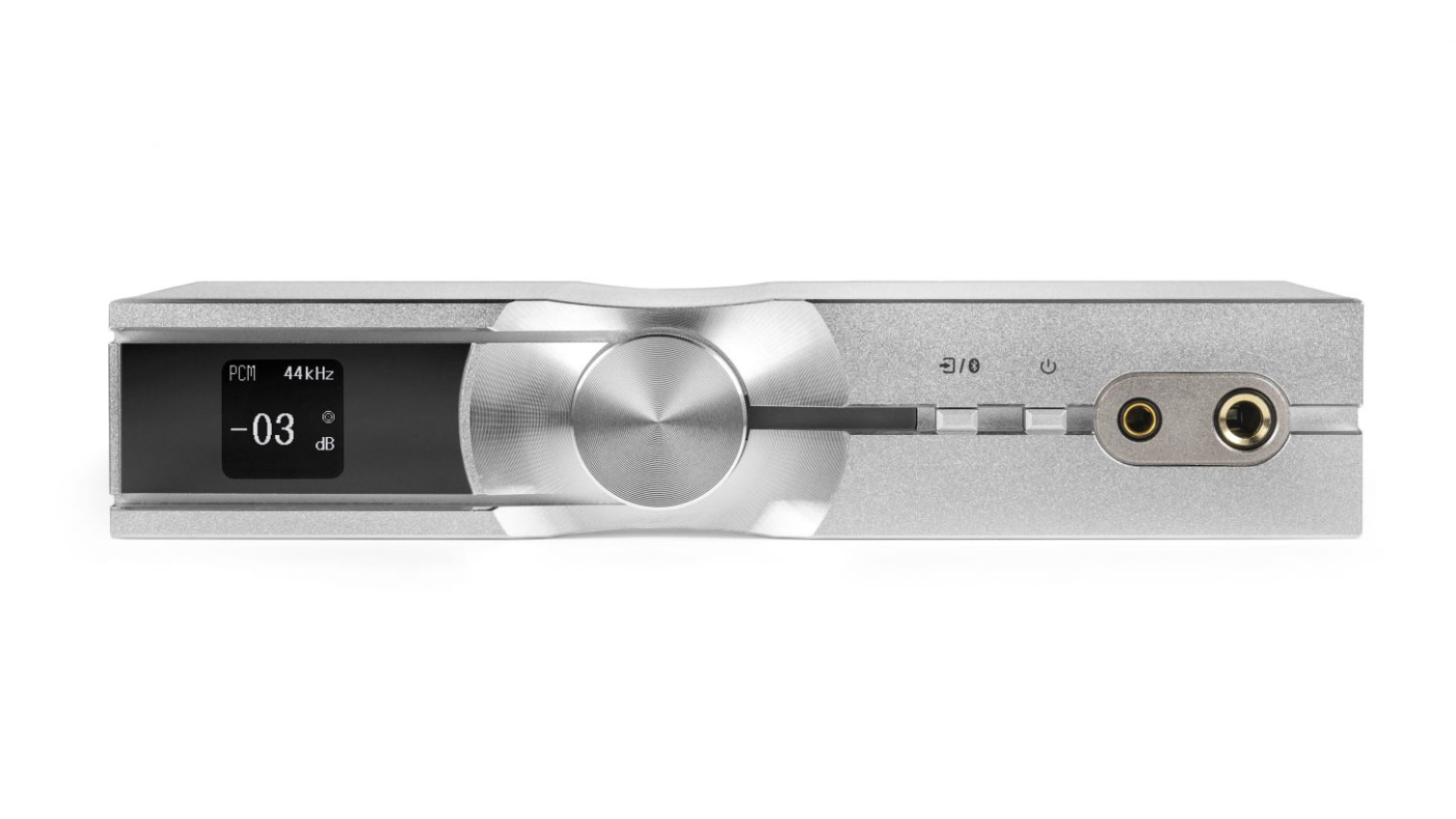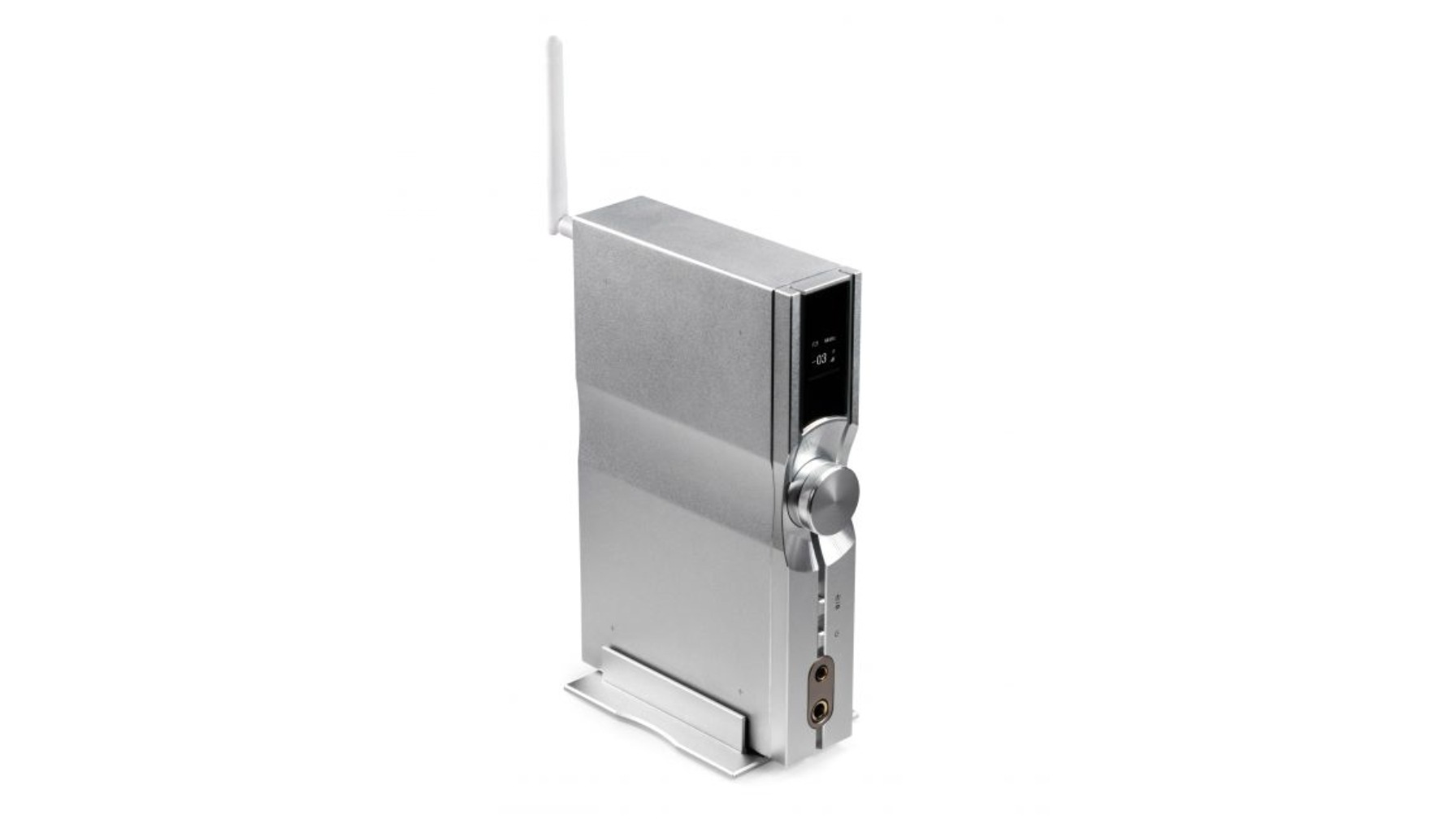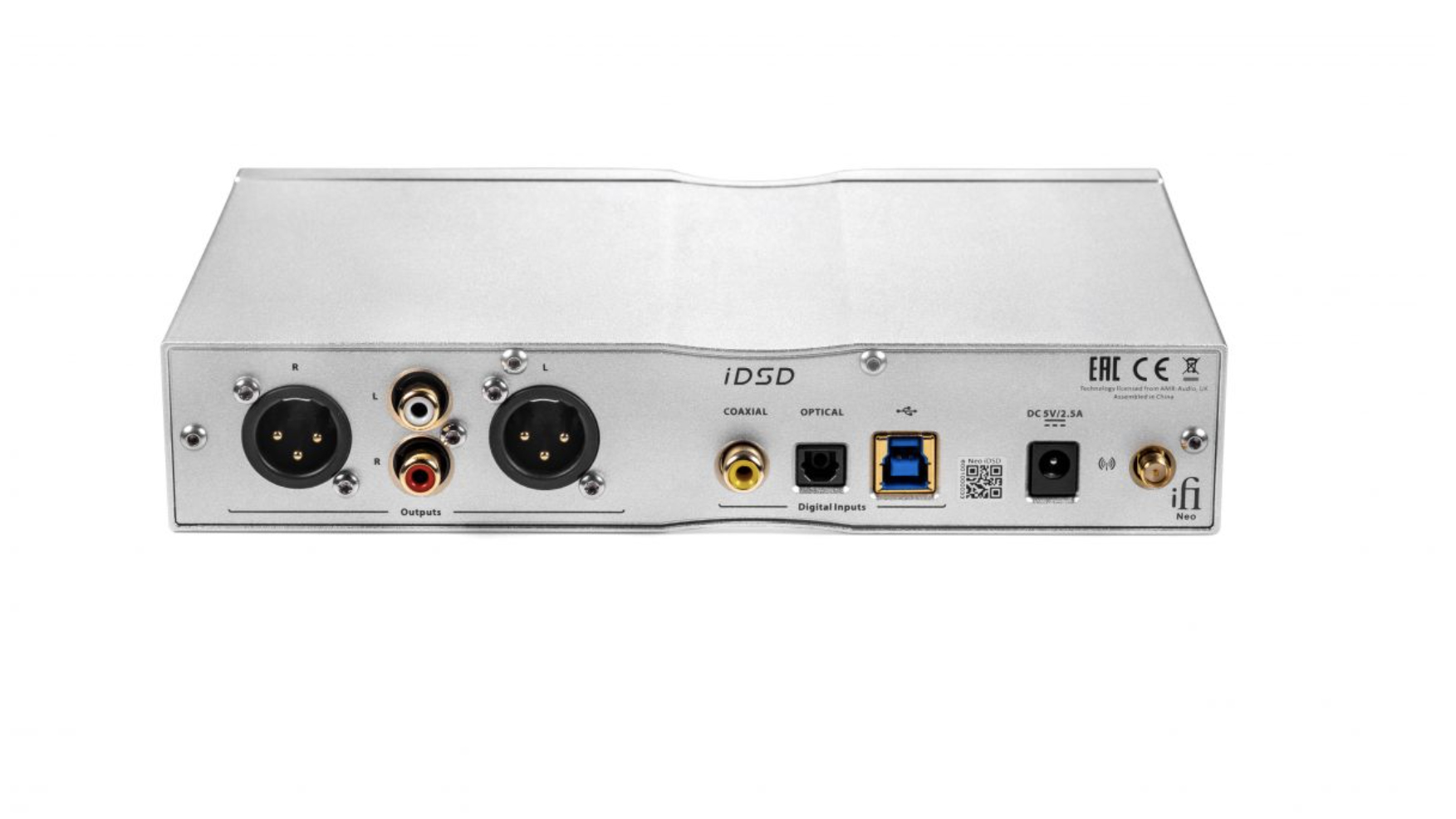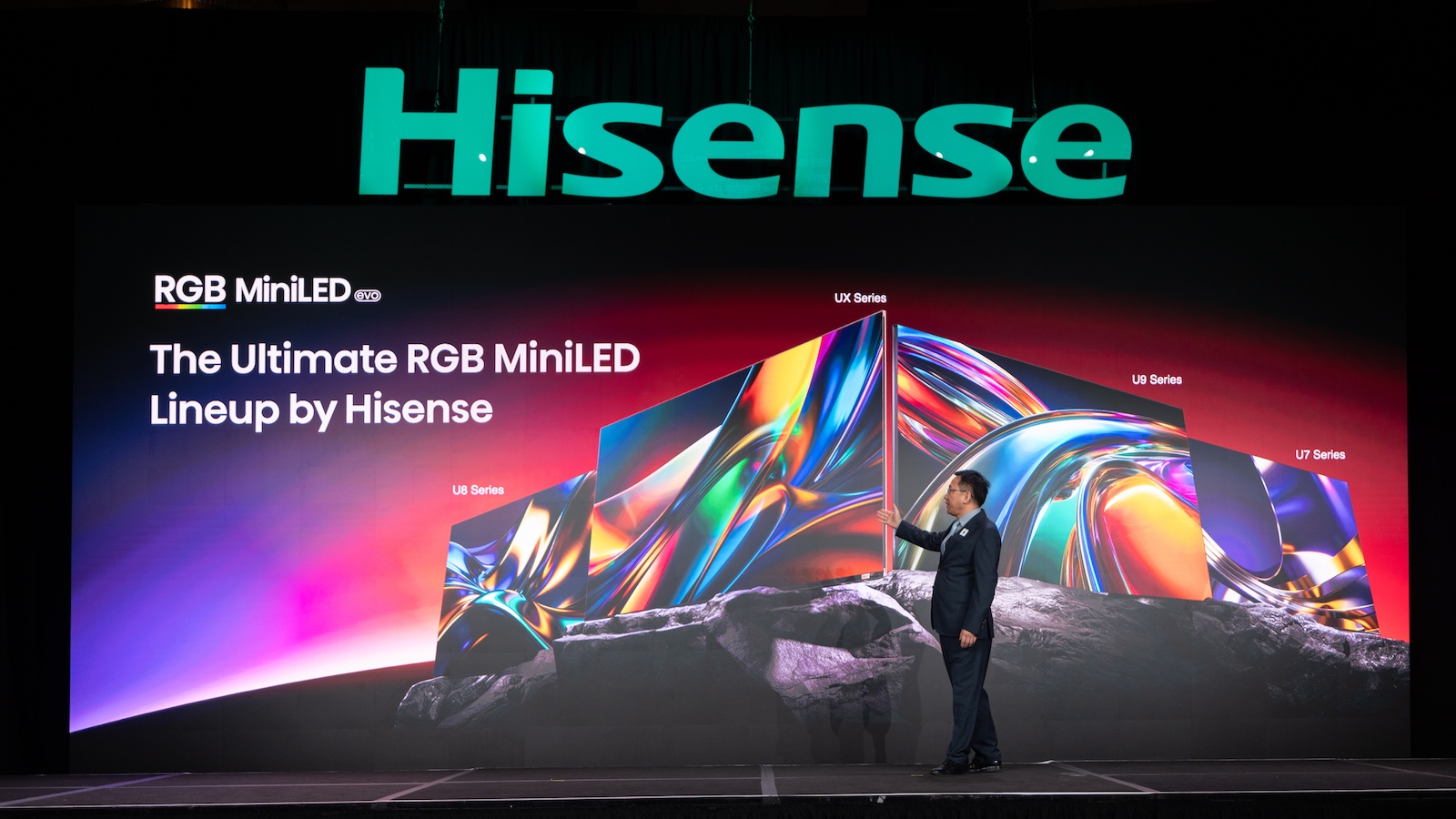Neo iDSD is iFi's new midrange digital hi-res DAC and headphone amp
iFi's latest release boasts portrait or landscape placement, plus 'state-of-the-art' specs

A relative newcomer in the hi-fi sphere, iFi has been producing some splendid affordable DAC technology – and several five-star portable products as reviewed by this publication – since 2012.
Its latest product is an all-new mains powered iFi DAC/headphone amp, the Neo iDSD, that boasts "sophisticated circuits to supply scintillating sonics with every audio format in your home environment".
It sits between the firm's flagship Pro Series and entry-level Zen Series devices and has been designed for maximum flexibility at home. Its aluminium casework can be positioned horizontally or vertically (the latter using a supplied stand) and its OLED display flips automatically to suit the preferred orientation.
The Neo iDSD can be used in three ways: as a pure DAC with a fixed-level analogue output to connect to a separate integrated amp or preamp in an audio system; or as a DAC/preamp with a variable output, (ie. for connecting directly to a power amp or active speakers). Headphone users can also make use of its amp stage to listen at home.
You can connect to source devices via cable or high-definition Bluetooth, with the company claiming that the Neo iDSD’s next-level digital engine and fully balanced analogue circuits deliver a captivating sound.
The Neo iDSD’s 'digital engine' is based around a Burr-Brown DAC chipset that iFi uses extensively, but of course, the creation of an exemplary DAC stage involves much more than just the selection of a particular DAC chip.
Another critical component is the XMOS chip that processes the audio data received via the USB and S/PDIF digital inputs. The Neo iDSD uses a new low-latency XMOS microcontroller with what iFi calls "greatly enhanced" processing power: compared with the current generation of eight-core chips, this new 16-core IC boasts double the clock speed (2000MIPS) and four times the memory (512KB), as well as the latest SuperSpeed USB standard.
The latest hi-fi, home cinema and tech news, reviews, buying advice and deals, direct to your inbox.
iFi’s in-house digital development team programmed the XMOS firmware to optimise sound quality, while jitter-eradication technologies are applied to the digital stage, including iFi’s GMT (Global Master Timing) femto-precision clock and intelligent memory buffer. The Neo iDSD comes with iFi’s GTO (Gibbs Transient Optimised) digital filter installed, but alternative filters can be loaded as firmware updates.

The Neo iDSD handles PCM data to 32-bit/768kHz, all levels of DSD up to DSD512, and single- and double-speed DXD. Thanks to the Burr-Brown DAC chip’s four-channel True Native design, PCM and DSD take separate pathways – enabling DSD, as well as PCM, to remain ‘bit-perfect’ through to analogue conversion.
MQA is also supported through the USB and S/PDIF inputs, with full decoding of MQA files up to 384kHz thanks to the processing power of the new 16-core XMOS chip.
iFi was the first audio brand to deliver products using Qualcomm’s new QCC5100 Bluetooth processing IC (when it launched the Zen Blue and Aurora), combining this chip with proprietary circuits to develop a ‘Bluetooth engine’ that is now also built into the Neo iDSD.
In fact, the DAC stage handles sampling rates well in excess of the maximum delivered by current hi-res Bluetooth formats – of the 24-bit-capable codecs, aptX Adaptive and aptX HD support up to 48kHz, while LDAC and LHDC reach 96kHz. All current high-definition Bluetooth audio formats are supported, including Qualcomm’s aptX Adaptive and aptX HD, Sony’s LDAC and HWA’s LHDC.
Other codecs covered include regular aptX and aptX Low Latency, AAC (the favoured format of iOS devices) and of course SBC.
The Neo iDSD ‘remembers’ up to seven paired Bluetooth source devices, making it easy to switch from one device to another, and the latest Bluetooth 5.0 specification should ensure a reliable connection.
Naturally, the digital stage is only half the story in any DAC/headphone amp. When it comes to the crucial analogue circuitry, balanced, differential analogue circuit design has long been championed for its ability to reduce noise and cross-talk within the signal path – but it's often more costly than single-ended circuitry.
iFi has gradually introduced fully balanced circuit design across its range – first in the flagship Pro Series components, then in the entry-level Zen Series devices. The Neo iDSD, which sits between the two, features a new, balanced, symmetrical dual-mono topology with short, direct signal paths, developed specifically for this model – iFi calls this circuit design PureWave, referring to the sonic purity it aims to achieve.
Renowned audio electronics engineer John Curl, now a consultant for iFi, has worked closely with iFi’s in-house technical team (headed by Thorsten Loesch) to perfect this design.
The headphone amp stage promises an engaging listen, with a continuous power output of more than 1000mW into 32ohms available through the balanced headphone socket.
The Neo iDSD's OLED display indicates audio format, sampling rate, volume level, input mode, and offers user-adjustable brightness and SilentLine design, with no electrical noise interfering with the audio signal.
Even the way the NEO iDSD switches between settings has been engineered to ensure sonic transparency – FET-based switching is handled by a microcontroller which only ‘wakes up’ when the user changes a setting, thus reducing interference.

For cable connections, the NEO iDSD provides three digital inputs – asynchronous USB Type B, as well as optical and coaxial S/PDIF. Three devices can be connected simultaneously via these inputs, plus a fourth via Bluetooth, with the input selected using the multifunction rotary control or the supplied remote. Balanced outputs are also supplied, to make the most of the Neo iDSD’s fully balanced circuitry.
At the front, alongside a standard 6.3mm single-ended headphone socket, there's a 4.4mm Pentaconn output for headphones offering balanced connection. Around the back, single-ended RCA outputs are accompanied by a pair of XLR sockets to connect the Neo iDSD to an amp and speakers (or active speakers).
The iFi Neo iDSD is available from selected retailers from Friday 6th November, priced £699 (about AU$1399). But if that's too much, there's always the iFi Zen Can affordable analogue headphone amp...
MORE:
See the best hi-fi and audio UK deals: savings on amplifiers, CD players and streamers ahead of Black Friday
Learn about MP3, AAC, WAV, FLAC: all the audio file formats explained
iFi Zen DAC What Hi-Fi? Awards 2020: iFi breaks into Chord-dominated DAC category
Becky has been a full-time staff writer at What Hi-Fi? since March 2019. Prior to gaining her MA in Journalism in 2018, she freelanced as an arts critic alongside a 20-year career as a professional dancer and aerialist – any love of dance is of course tethered to a love of music. Becky has previously contributed to Stuff, FourFourTwo, This is Cabaret and The Stage. When not writing, she dances, spins in the air, drinks coffee, watches football or surfs in Cornwall with her other half – a football writer whose talent knows no bounds.
